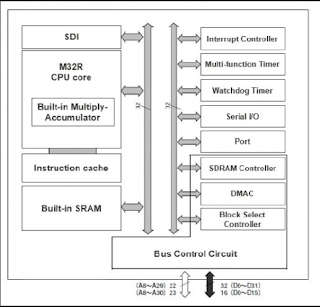32-bit microprocessors
In PC engineering, 32-piece numbers, memory addresses, or other information units are those that are 32 bits (4 octets or 4 Bytes) wide. Likewise, 32-piece CPU and ALU structures are those that depend on registers, address transports, or information transports of that size. 32-piece microcomputers are PCs in which 32-piece chip are the standard. We realize that n-bit microchip can deal with n-bit word size.
As n-bit register can store 2n various qualities in this way, a 32-piece register can store 232 distinct qualities. The scope of whole number qualities that can be put away in 32 bits relies upon the whole number portrayal utilized. We know there are two most normal portrayals for number information. What's more, they are Unsigned and Signed portrayals.
The range is 0 through 4,294,967,295 (232 − 1) for portrayal as an Unsigned parallel number, and −2,147,483,648 (−231) through 2,147,483,647 (231 − 1) for portrayal as two's supplement Signed numbers.
One significant outcome is that a processor with 32-piece memory locations can straightforwardly access all things considered 4 GB of byte-addressable memory. Be that as it may, because of certain issues, however by and by the breaking point might be lower.
There were various examples of 32-piece microchips. As models, we can think about after
In 1985, Intel declared the 80386 a 32-piece microchip with 2,75,000 transistors. It upheld performing various tasks.
Intel 486 chip was the first to offer an inherent math co-processor presented in the year 1989. It had 1.2 million transistors inside it.
Intel Pentium chip with 3.1 million transistors was presented in the year 1993. It permitted PCs to process true information like discourse, sound, penmanship and photographic pictures.
In the year 1997, the 7.5-million transistor Intel Pentium II chip was structured explicitly to process sound, video and designs information proficiently.
In the year 1999, Intel Celeron processors go intended for the worth PC showcase portion were
discharged.
Intel Pentium IV processors with in excess of 42 million transistors presented from 2000 are utilized in the current PCs. In such PCs, clients can convey TV-like video through the web, speak with continuous video, make proficient quality motion pictures and voice, render 3D illustrations progressively, rapidly encode music for MP3 players and can simultaneously run a few sight and sound applications when the framework is associated with the Internet.
Presented from 2001, Intel Xeon processors are focused for superior and mid-go, double processor workstations, double and multiprocessor server arrangements coming in the range.









No comments:
Post a Comment
If you have any Doubt, Please let me know